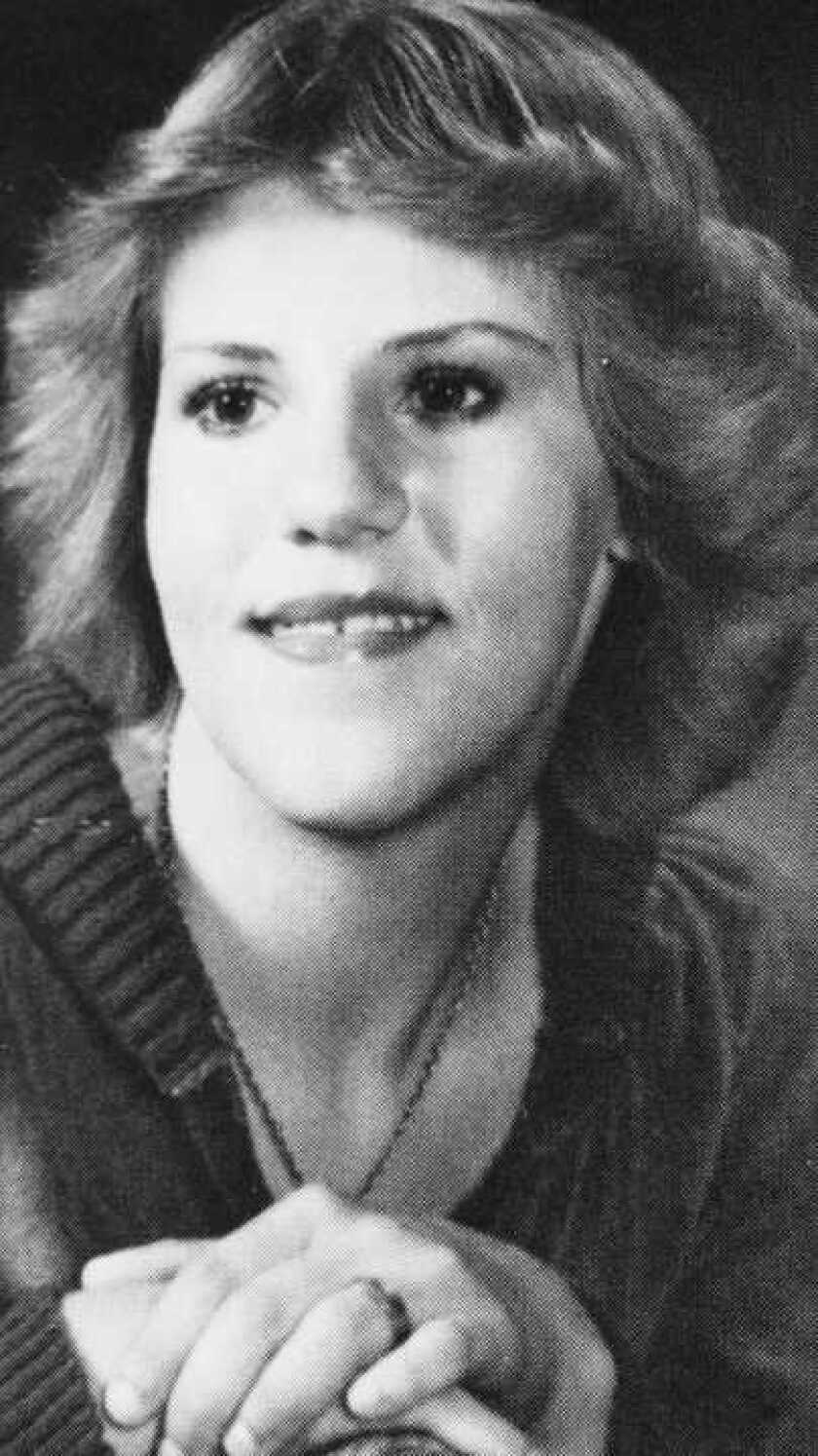Editor's note: This is part 2 in a 2-part series on Robert Leroy Nelson, a former Minnesota state trooper who confessed to the murder of 18-year-old Michelle Busha in 1980.
BLUE EARTH, Minn. — Robert Leroy Nelson spent 15 years patrolling Minnesota’s roads and highways.
ADVERTISEMENT
He now sits inside a prison cell in Karnes County, Texas, where he’s serving a life sentence for the sexual assault of a child — and where he served a concurrent 16-year sentence for the 1980 slaying of 18-year-old Michelle Busha, whose identity was revealed in 2015 through DNA and forensic genealogy.
Nelson confessed to Busha's murder in 1988, while in a Texas prison for the sexual assault of a minor. He told investigators for Minnesota's Faribault Sheriff's Office that he saw Busha exit a blue van while on duty near Interstate 90 in Blue Earth.
The former state trooper handcuffed Busha in the backseat, where he sexually assaulted her before removing all 10 of her fingernails and strangling her with a shoestring.
Then he tossed her body — unclothed and without belongings — in a nearby farm field.
He told investigators that his actions were not in line with his normal behavior. That day, he said, he “snapped,” according to a transcript of his confession included in the investigative file related to Busha's death.
Yet some investigators throughout the 19 counties where Nelson served during his 15 years of parole — from July 1970 to August 1985 — have explored the possibility that Nelson could be responsible for additional crimes.
Forum News Service contacted the sheriff departments in the 19 counties Nelson patrolled throughout his career. At least three counties have known cold cases originating within the time frame Nelson served their districts.
ADVERTISEMENT
Nelson has only been charged — and convicted — for the death of Michelle Busha, previously known as Blue Earth Jane Doe .
The confession
Nelson left Minnesota — and his post near Detroit Lakes — in 1985, bound for Texas, where he, his wife and three young children became members of a strict religious organization referred to in investigative files as a cult.
Three years later, Nelson was convicted for sexually assaulting a minor. He was sentenced in Texas to life in prison.
At the beginning of his prison term, he told his pastor about another crime he might have committed while working as a patrolman in Minnesota.
The confession unfolded slowly, throughout the course of multiple interviews.
During Nelson's first interview with law enforcement officers in 1988, he described “visions” of harming at least one woman in Minnesota.
But he fell short of admitting to killing Blue Earth Jane Doe at that time and told investigators he couldn’t decipher between visions and reality.
ADVERTISEMENT
Investigators walked away from that interview, for the most part, empty-handed. Nelson's confusion fell short of a confession.
Months later, he said was ready to disclose everything he remembered to investigators.
And, he did.
A transcript of Nelson's confession, included in Busha’s investigative file, reveals a vivid account of what she went through the day she was killed.
Nelson initially observed Busha exiting a blue van while he was patrolling near I-90 in Blue Earth, he said. He sensed the young girl had gotten into a fight with the people inside the van. As she wandered down the interstate, Nelson pulled up in his squad car and offered her a ride.
At first, he thought she was flirting with him, according to the transcript. He pulled off the interstate and onto a dirt road. He parked the car, got out and opened the back door, where Busha sat.
Busha fought his advances — and threatened to turn him in to the authorities. That’s when Nelson handcuffed her and pulled the pliers out of the squad car’s trunk. He used the pliers to rip out her fingernails.
ADVERTISEMENT
He did it as a threat, he said in the investigative file.
His “threat” included the forceful removal of fingernails from all 10 of her fingers. When that was done, he took the shoelace drawstring from her sweatshirt and tied it around her neck.
She died from ligature strangulation, according to the autopsy.
Throughout the course of his confession, Nelson described his actions as a surprise to himself, indicating Busha was the first — and only — victim he killed.
“I don't like to use it as an excuse, but the anger and the frustration and a whole lot of stuff that was buried deep inside of me that I didn't even know was there was coming out in my assault of this lady and in the things I did next,” Nelson told investigators, according to a transcript of his confession included in the investigative file.
After he killed Busha, he removed her clothing and all belongings that could be used by authorities to identify her. He stuffed her clothing in a bag, which he placed in the trunk of the squad car before dumping it at a nearby landfill.
The purse, he said, was hidden in a barn on his former farm property. By the time he confessed in 1988, the farm property had been sold. Prior to that, Nelson rented the property.
ADVERTISEMENT
The purse was never discovered on his farm property. He pleaded guilty to first-degree manslaughter and was sentenced to 16 years in prison, which he served while in prison on the life sentence for sexually assaulting a child.
Nelson continues to serve the life sentence after his parole was denied on May 15, 2024. His next parole review date will be in May 2027.
Cold case in Martin County
Nelson served , comprising 10 counties in the southcentral region of the state, from 1970 to 1981.
The district includes Martin County, where investigators have long sought answers for the 1975 slaying of 21-year-old .
Bontjes’ body was discovered in a farm field along a rural gravel road on the morning of Oct. 3, 1975 with a gunshot wound to her head.
She was found roughly one mile from where her vehicle was discovered the day before.
Bontjes’ 1974 Vega was found abandoned on Highway 4 on the morning of Oct. 2, 1974, roughly 30 hours before her body was discovered.
ADVERTISEMENT

Her purse and jacket were located inside her vehicle. The keys remained in the ignition — and her shoes were found, together, on the ground nearby.
In addition to a gunshot wound to the head, Bontjes had been violently beaten. Like Busha, she was discovered unclothed.
Nelson was questioned about Bontjes’ case in Smith County, Texas on March 31,1988.
The interview came after Nelson’s pastor told Smith County investigators about a conversation the two had regarding Nelson’s possible involvement in — at least — one homicide in southern Minnesota, while he was working as a state trooper.
He did not confess to killing Blue Earth Jane Doe during this interview.
Initially, Nelson told investigators he didn’t recall specifics regarding the deaths of Blue Earth Jane Doe or Bontjes.
“As for the two homicides which occurred in southern Minnesota in Martin and Faribault County, Mr. Nelson again states that he has no independent memory or recollection of those homicides,” Smith County detectives wrote in the investigative file.
Instead, he spoke of vague “visions.”
Nelson did, however, remember other details related to Bontjes' case.
He told investigators he was working the day Bontjes went missing and responded to the crime scene when her body was located.
He denied any involvement in her death. Instead, he pointed to the potential involvement of his colleague, who was convicted in 1981 for first-degree sexual assault.
Nelson's denial didn’t eliminate him from the suspect pool, though.
Martin County investigators questioned Nelson directly about Bontjes’s death, too, though he denied any involvement.
A DNA sample obtained from the scene where Bontjes' body was discovered was tested against Nelson’s DNA — and was not a match, Martin County Sheriff’s Sgt. Matt Owens told Forum News Service.
That also doesn’t rule him out, though.
In a May interview with Forum News Service, Owen said it’s possible the DNA collected at the crime scene could belong to someone other than Bontjes’ killer.
Martin County investigators also checked up on Nelson's claim that he was working the day Bontjes went missing. Owens said the time of his shift did not coincide with the time frame she went missing.
"He is obviously a suspect like anybody is from back then, but we have nothing to go further with him at this point," said Owens, who declined to disclose the type of DNA collected at the scene.
Missing in Le Sueur County
On March 20, 1973, 19-year-old John Patrick Deeny left his Janesville, Minn. home.
He hasn’t been seen or heard from since.
Deeny’s case is shrouded in mystery and secrecy. The Bureau of Criminal Apprehension website provides little context to his disappearance, other than he has not been seen since reported missing in 1973.
Deeny was 5 foot, 8 inches tall and weighed 175 pounds, according to the BCA. He had brown hair, and would now be 71 years old.
Le Sueur County Sheriff Brett V.P. Mason told Forum News Service that Nelson has not been considered a suspect in Deeny's disappearance.
"There was no evidence to suggest he was involved," he said.
The most recent movement on the case came in 2013, when investigators obtained DNA samples from Deeny's siblings.
The DNA was uploaded into a national database used by law enforcement officers and organizations to match missing persons cases with unidentified remains.
Unsolved in Grant County
Nelson was transferred to a new district, headquartered in Detroit Lakes, in 1981. That year, 18-year-old Karla Jo Nieland was discovered dead in in her boyfriend's vehicle in the early morning of May 17, 1981, hours after a party on nearby farm property.
Nieland was brutally beaten before being strangled.
She was discovered, shirtless, in the passenger’s seat. Her shirt, sweater and bra were found in a nearby field, not far from where her boyfriend’s belongings were located.

Nieland’s then-boyfriend, John Keep, was charged with her murder.
When officers arrived at the scene, her blood stained his body and clothing, although he claimed this was the result of holding her after he discovered her lifeless body.
Investigators also argued marks on her face matched the ring he wore.
Yet Keep was acquitted by a jury just hours after deliberation.
Public documents associated with the murder trial of were sealed from the public. Forum News Service filed for access to the sealed records in 2022, but has not since received a response.
Keep maintained his innocence throughout — and after — his trial.
Forum News Service attempted to reach Keep in 2022 and received a response from his lawyer stating he did not wish to comment.
Grant County Attorney Justin Anderson told Forum News Service in 2022 that the case has gone cold since Keep’s trial.
“It is certainly possible that the person who committed that murder has been acquitted of that murder,” Anderson said.
Grant County Sheriff Jon F. Combs told Forum News Service in a recent interview that Nelson has never been considered a suspect in Nieland’s slaying.
If you have any information related to potential cold cases related to former Minnesota trooper Robert Leroy Nelson, contact the Bureau of Criminal Apprehension tip line at 1-877-996-6222.









